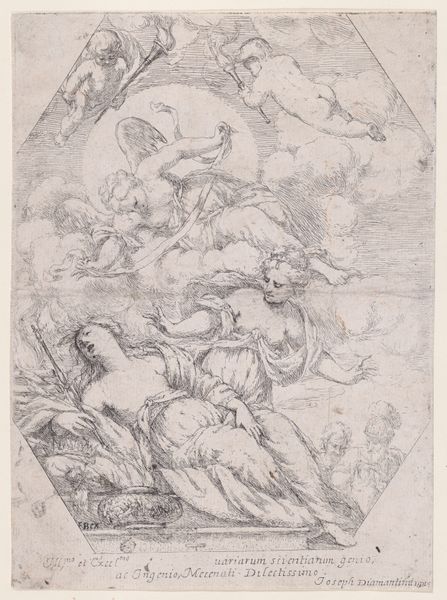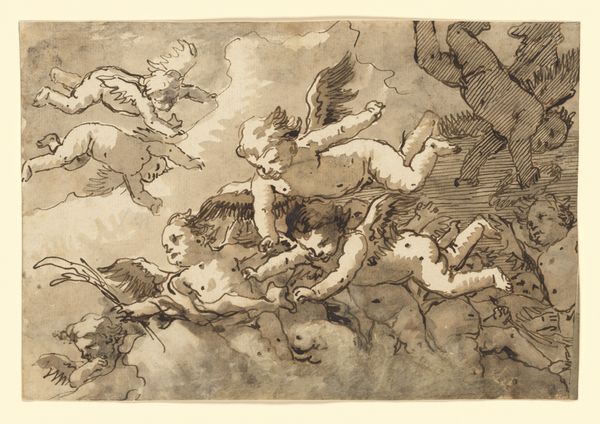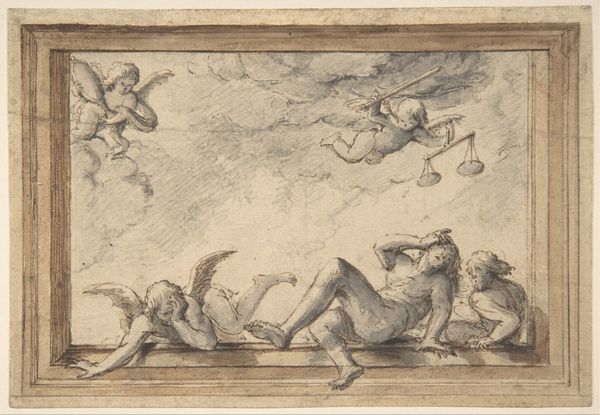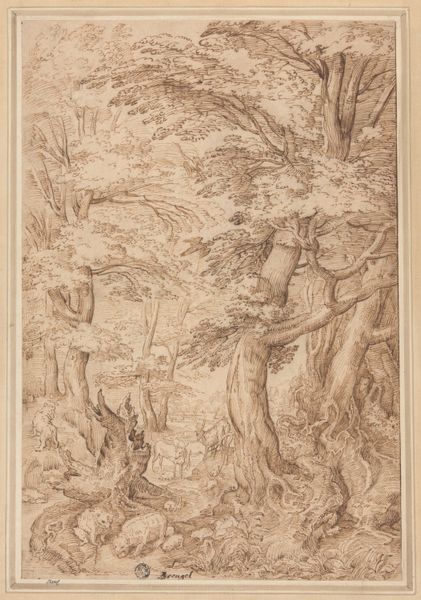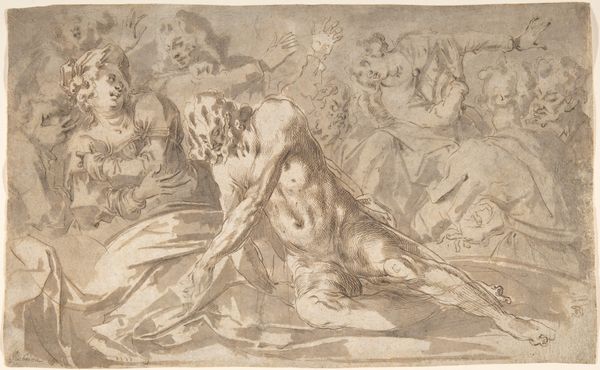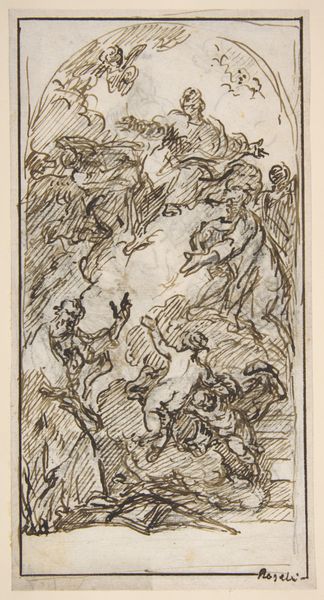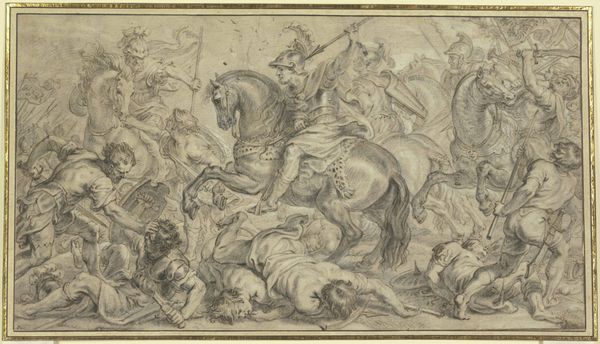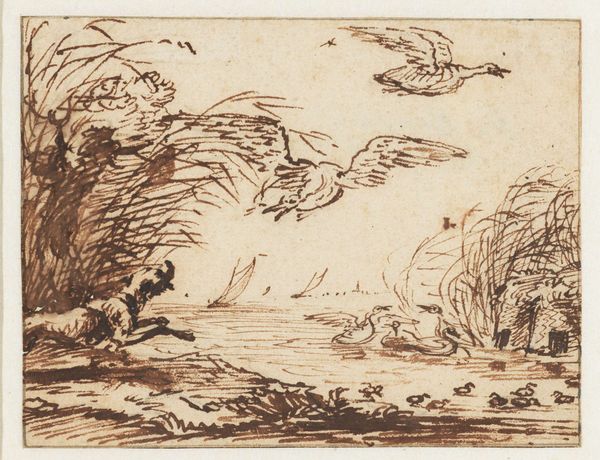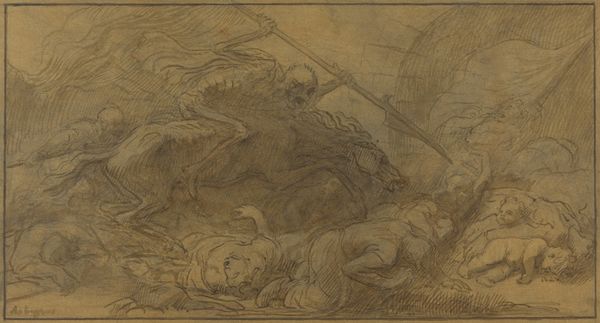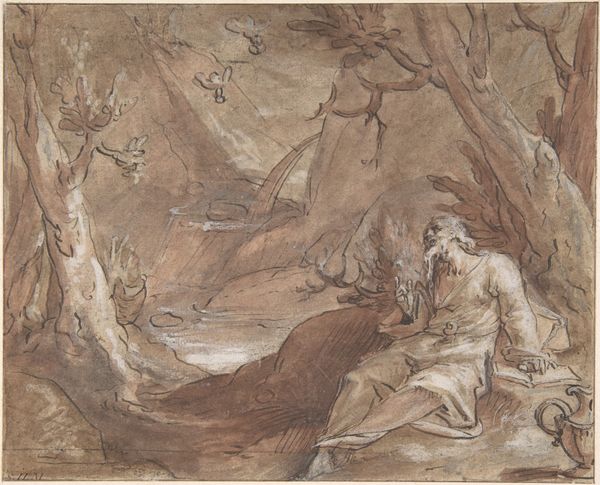
The Angel Appearing to Hagar in the Desert (recto) c. 1660
0:00
0:00
drawing, ink
#
drawing
#
narrative-art
#
baroque
#
ink painting
#
landscape
#
figuration
#
ink
#
genre-painting
Dimensions: sheet: 18.9 x 27 cm (7 7/16 x 10 5/8 in.)
Copyright: National Gallery of Art: CC0 1.0
Editor: Here we have "The Angel Appearing to Hagar in the Desert," a sepia ink drawing made around 1660 by Pier Francesco Mola. It's quite striking how the angel dominates the scene, while Hagar seems lost in contemplation. What do you see in this piece, considering the social or cultural context? Curator: Well, it’s interesting to consider how Mola is engaging with the theme of divine intervention. Baroque art often uses such scenes to depict moments of high drama, often with the intent to inspire religious fervor. How does this portrayal of Hagar differ from earlier or contemporary depictions of the same biblical narrative? Does the landscape itself play a role? Editor: That's a great point! Hagar’s position at the margins – she’s an outcast in the biblical story – makes me wonder if Mola is subtly commenting on the treatment of outsiders or marginalized figures. Curator: Precisely. The Baroque period saw a rise in art patronage by the Church and wealthy elite. Does this narrative – Hagar’s story – present an opportunity for Mola to subtly critique societal norms regarding class or gender, while still remaining within acceptable bounds? The visual prominence given to the angel is interesting, wouldn’t you say, and perhaps symbolic of a more generally elevated position granted to male subjects, both in and outside religious narratives of this type. Editor: I never considered that. It's fascinating how much a single drawing can reveal about the power structures of the time. Thanks for opening my eyes! Curator: My pleasure. Art is never truly separate from its environment, and by examining its role within society, we gain a far richer understanding of its meanings and enduring impact.
Comments
No comments
Be the first to comment and join the conversation on the ultimate creative platform.

